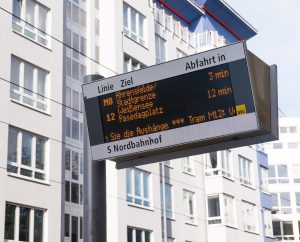Transport in Germany By Tomer Levi
February 06 2023•Cfao
Different Types of Transport in Germany
Germany is a very large country and it has a great transport system that enables travellers to get around easily explains Tomer Levi, a tour guide in Europe. There are a variety of different methods for transporting people, from trains to buses to taxis.

Trains in Germany are operated by the main railway company, Deutsche Bahn (DB), which is the only national rail operator in the country. They run both high-speed and low-speed routes, including some long distance services across the borders of other European countries.

Tickets for trains in Germany are generally easy to buy online or from a ticket machine at a station. The price of a train ticket varies depending on the destination and the timing of your booking. However, booking in advance is often the best way to save money.

Buses are a common mode of transport in most German towns and cities, connecting local areas with those further afield. They also operate into the night, albeit less frequently than S-Bahn and U-Bahn trains.
There are many different bus companies in Germany and some of the major ones include Flixbus and Eurolines, who offer bus journeys throughout the country with a regular timetable and destinations across borders to neighboring countries.

The bus network in Germany is vast, and it links all parts of the country. It is also a popular choice for longer trips.
Taxis in Germany are another popular way to get around, and they are a good option for longer trips where you are likely to be stuck in traffic. They are metered and charge a base rate (flagfall) plus a per-kilometer fee.
Trams in Germany are a common form of transport in larger urban centres, and they can be a useful alternative to buses or the S-Bahn or U-Bahn. They are slower than buses, but they are a useful way to get from one point to another and are generally very reliable.
Most of the trams in Germany are metered, with a fixed base rate and a per-kilometer fee. This means that you don't have to worry about fare if you only need to go a short distance, and you can even take advantage of special rates if you are travelling during off-peak times.
In addition to the standard bus and tram routes, some German cities have a light rail system, called Stadtbahn, that runs underground in some parts of the city. These lines are not true underground subway systems like the ones in Berlin or Munich, but they use signs that read “U” with a white background, and the service is quite fast (every 10-20 minutes) during off-peak periods.
Unlike London, Paris, and San Francisco, S-Bahn and U-Bahn stations are not staffed with turnstiles; passengers must simply pass through the ticket gates. It's a quick and convenient way to get from place to place in a big city, and it can be especially useful for travelers who don't want to use their own car.
Whether you're planning to take the train on a journey across the country, or simply visiting one city and want to make it to a nearby town, Germany has some of the most advanced public transport networks in Europe. With a wide range of transportation options, getting around the country is easier and more efficient than ever before.